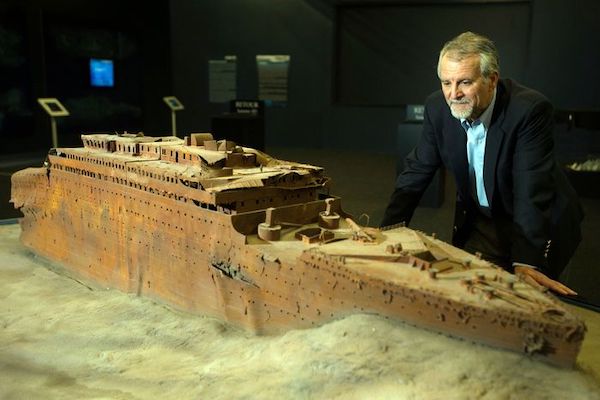Rescuers are racing against the clock to find a submersible that has gone missing near the Titanic wreckage with one of the world’s most knowledgeable deep-ocean search experts currently onboard. Paul-Henri Nargeolet, 77, was piloting the minivan-size submersible Titan on Sunday with four passengers aboard. It lost contact with the surface an hour and 45 minutes after its descent and has not been heard from since. At a press conference on Tuesday, a U.S. Coast Guard spokesman said the Titan had about 40 or 41 hours of oxygen left.
Dubbed “Mr. Titanic” by the media for his frequent dives to the wreck of the doomed liner, Nargeolet is a world-renowned underwater-search authority who helped locate a French aircraft that went missing in the middle of the Atlantic Ocean in 2009.
Nargeolet was born in Chamonix, France, and joined the French navy in 1964. During his 22 years in the service, he worked as a deep-sea diver and piloted submarines. He later joined the French ocean-research institute IFREMER, with which he explored numerous historic shipwrecks in the deep-sea submersible Nautile. He was aboard the Nautile when it made the first manned descent to the wreck of the Titanic in 1987, two years after Robert Ballard discovered it using unmanned submersibles.
In 2009, Air France Flight 447, an Airbus 330 carrying 228 passengers and crew, disappeared over the Atlantic en route from Rio de Janeiro to Paris. Although a number of bodies and pieces of debris were quickly recovered from the surface, investigators initially couldn’t locate the main wreckage on the ocean floor 13,000 feet below. The French agency responsible for the search, the Bureau d’Enquêtes et d’Analyses, brought Nargeolet onboard as the coordinator of the search. The wreckage was finally located in 2011.
Nargeolet was critical of efforts to find the undersea wreckage of Malaysia Airlines Flight 370 after its disappearance in 2014, which the Australian authorities had contracted out to the Dutch company Fugro. “Fugro is a big company, but they don’t have any experience in this kind of search, and it’s really a very specialized job,” he told Reuters in 2015. “This is a big job … I’m not an Australian taxpayer, but if I was, I would be very mad to see money being spent like that.” The effort was called off in 2017 without any trace of the missing plane being found.
Nargeolet continued to make dives to the Titanic wreckage and has executed more than 35, including a mission last year aboard the Titan, the submersible currently missing. According to the French newspaper Le Figaro, Nargeolet had expressed skepticism about the Titan’s safety, telling a former colleague that he “didn’t have total confidence in this submarine made of composite materials.”
Part of the reason for Nargeolet’s hesitancy was the Titan’s relatively large porthole, which is two feet in diameter. While this feature makes it easier for passengers to get a good look at the Titanic, it represents a potential point of failure in a vessel that has had to endure pressures of nearly 6,000 pounds per square inch.
“He was a little dubious about this new technology but, at the same time, intrigued by the idea of piloting something new, a bit like being a test pilot,” his former colleague Michel L’Hour told Le Figaro.
Nargeolet has long been aware of the risks his profession entails. When asked by a journalist in 2019 if he feared the dangers associated with underwater exploration, he replied, “If you are 11 meters or 11 kilometers down, if something bad happens, the result is the same … When you’re in very deep water, you’re dead before you realize that something is happening, so it’s just not a problem.”
This article originally ran on June 21, 2023 in New York magazine.
